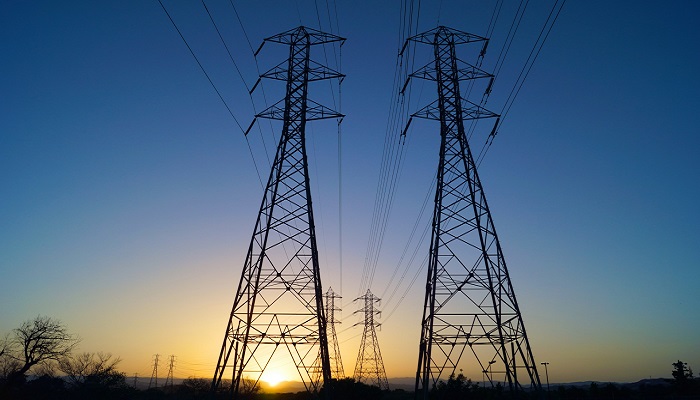Southern Africa’s Power Pool- SAPP as well as the Southern African Development Community- SADC have gone on to appoint Climate Fund Managers- CFM, blended finance fund managers to manage their Regional Transmission Infrastructure Financing Facility- RTIFF.
Apparently, the $1.3 billion target facility is focused on elevating strategic interconnection as well as cross-border energy transmission within the Southern Africa region.
The facility, which launches worth $20 million in commitments coming from SAPP, looks for a first close of $500 million by 2025 to be raised from public as well as private sector investors locally as well as internationally, and also a final close of $1.3 billion in 24 months. It is well to be noted that the facility will have a fund life of almost 20-25 years.
RTIFF will go on to prioritize projects that focus on connecting unconnected SAPP members at present, help relieve congestion bottlenecks in regional electricity trading, go ahead with inter-continental power trading via transmission corridors, as well as support the adoption when it comes to new-generation renewable energy space within the region.
As per the Climate Fund Managers, energy transmission infrastructure projects happen to be notoriously high-risk as well as capital-intensive, thereby making them challenging so as to fund independently by way of sovereign capital alone.
In order to battle this out, the facility uses a blended finance model, using public capital so as to balance risk as well as enable private capital to enter.
It is well to be noted that the fund’s architecture happens to follow structure of CFM’s emerging market mixed finance facilities, Climate Investor One, which happens to be focused on renewable energy generation and transmission, and also Climate Investor Two, which is focused when it comes to water, sanitation, and ocean infrastructure.
It will go on to comprise a $100 million target development fund so as to offer concessional capital along with development expertise, such as support on viability studies, legal as well as financial structuring, planning, and also ESG compliance.
It will also go on to have a $1.2 billion target Construction Fund, which will go on to make direct investments by way of the provision of construction financing as well as some value-added expertise in terms of transmission project builds.
Enhancing transmission between the member states
The chairperson of the SAPP Executive Committee, Victor Mapani, said that the provision when it comes to sustainable power can be distilled into three activities that range from generation, and transmission to distribution. While the generation part goes on to receive the lion’s share in terms of attention, the significance of delivering that power to where it is actually required is equally important.
The facility happens to be looked out as the one to enhance energy transmission within as well as between the 16 SADC member states and also with certain other power pools.
SAPP happens to be a cooperation of 12 Southern African nations that are represented by their national power utilities along with some private utilities under the umbrella of the SADC.
It is well to be noted that SAPP members like the Democratic Republic of the Congo, Angola, Botswana, Lesotho, Eswatini, Malawi, Namibia, South Africa, Mozambique, Zambia, Tanzania, as well as Zimbabwe have already gone on to create a common power grid amongst their countries.
Notably, the SAPP also goes on to function as a competitive electricity market within the SADC region. Also, the RTIFF will offer power companies as well as project developers working within transmission issues with an access to patient capital as well as development expertise so as to establish strategic interconnections that enable the rising electricity trade.
Mapani added that access to capital happens to be the number one challenge facing developers of energy transmission infrastructure. RTIFF goes on to dismantle this by enabling the private sector to work with the public sector utilities so as to roll out new transmission lines at scale.
He further said that they are indeed delighted to have appointed CFM due to their strong track record within the African energy sector in order to establish as well as manage this innovative facility and to also help the member states finally get a sustainable, resilient energy supply.
Stephen Dihwa, the coordination center executive director of SAPP, said that the interconnection throughout SAPP by way of strategic transmission corridors can go on to save the SADC region an expected $37–42 billion in net present value- NPV by 2040. They have gone on to identify eight high-priority transmission projects for RTIFF that will go on to bring economic advantages of $4.3 billion in NPV.
Head of Private Credit, Amit Mohan, added that at CFM, the lack of investment within the grid infrastructure happens to be one of the reasons for the ongoing blackouts across many parts of Southern Africa. The fact is that if one doesn’t invest in grids today, they will go on to face gridlock tomorrow.
He further said that it is even more pressing from an energy transition point of view as the world requires us to embrace green electrons on the grid. CFM is indeed proud to be associated with SAPP as well as being appointed as manager of RTIFF since there is a deep need to mobilize blended finance at scale and speed so as to enable the rollout of more grid infrastructure within the region.




































